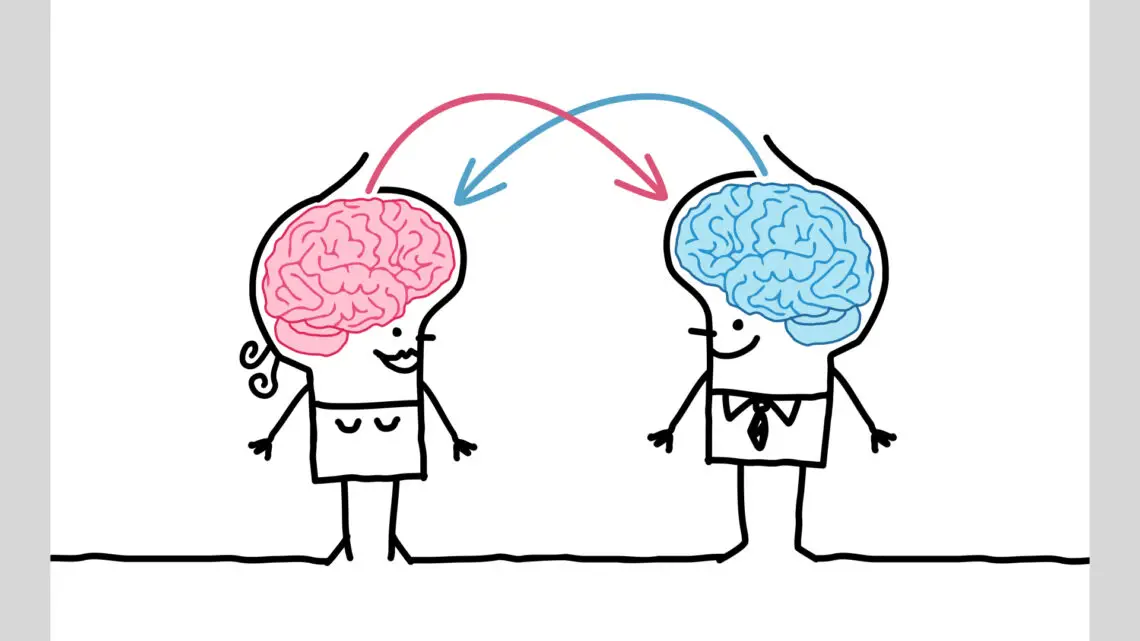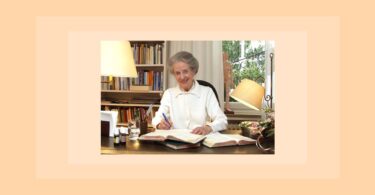The E-zine team has taken on the sensitive project of creating an environment where the protagonists of different trends in homeopathy can explain their views to other homeopaths. We aim to forge this project based on mutual interest and respect, to help further progress and harmony.
The purpose of this article is to provide some general information, to help the reader form his own opinion, after reading various articles in the coming months. In this article, I will touch broadly on the evolution that has given rise to the different schools. I then propose to discuss some of the questions that shape the various schools of thought and that should help in enriching homeopathy for all.
The beginning: Hahnemann’s work:
When Hahnemann started using his new homeopathic remedies, he treated diseases rather than patients. Hahnemann’s first major achievements were the successful interventions in various epidemics during his time. These results drew the attention of others who formed the basis for his following that forged the spread and survival of homeopathic medicine. His initial work consisted of helping the patient with the present complaint. At first, Hahnemann did not appreciate what is now called the biopathpography of the patient: the patient’s medical history before and after the consultation.
The patient came with a complaint and when this complaint was successfully addressed, the patient and Hahnemann were satisfied. When Hahnemann started to notice how patients returned time after time with the same complaints, he wanted to improve his new technique to allow lasting cures. His research into the causes of the reoccurrence of symptoms and diseases led him to write his work on Chronic Diseases. Based on three concepts, he developed the idea of the ‘Miasms’. – He used the following schema of disease evolution: contamination- incubation- vicariate symptoms- suppression, which comes from what was known in his time about venereal diseases.
A disease can be contracted, then evolves into its usual symptoms followed by a cure or suppression of its symptoms, through (suppressive) treatment. The suppression causes other symptoms to appear. From the phenomenon of epidemics he uses the concepts of ‘collectivism’ and ‘contagion’. Many people can be affected by the same disease and can pass on this infection from one to another and through the generations.
Based on the concepts of ‘epidemic’ and ‘pathogenesis’ he creates the entity of miasms which are composed of a large group of individuals. A miasm is like a collective disease or epidemic for which a unique remedy can be found by using the ‘homeopathic symptoms’ of the miasm to determine what remedy pathogenesis would cover these symptoms. Hahnemann took a step forward with the conceptualisation of homeopathic thinking but he takes a step backward methodologically. Instead of prescribing for the individual, he now decided to prescribe for the ‘individual miasm’ (one of the three miasms or the expression of this miasm). As a consequence, following these new findings, many of his prescriptions started with Sulphur, Thuja, Nitric acid or Mercury, depending on whether the patient belonged to the psoric, sycotic and or syphilitic group. After these initial prescriptions, he attempts to make more individually tailored prescriptions. The concept of miasms as developed by Hahnemann relies on the cause of disease lying outside the patient. When the patient falls ill, it is the miasm that infiltrated the patient, that causes the patient to become ill; through contagion, sexually or otherwise.
Another evolution that took place in Hahnemann’s work was the establishment of the importance of the second consultation. After his research into the observation of chronic illnesses, Hahnemann realized that the second consultation was as important as the first to make sure a long term cure would be obtained. In his work on the Chronic Diseases, Hahnemann mostly explained what not to do during this second consultation. He did not have enough time at his disposal to finalize his work on this subject and give positive advice on how to proceed during this consultation.
J. T. Kent
It is Kent who clearly explained in his conferences how to interpret the second consultation in order to decide what should be done next. All of us who have spent time studying homeopathy have learned about the twelve possible evolutions of a patient after taking a remedy. This was a great step forward in the methodology of homeopathic prescription.
Homeopaths were given a tool to judge the evolution of the patient through a sequence of homeopathic prescriptions. Kent’s work is still the basis for guidance on prescription for many homeopaths. When we decide whether to repeat a remedy or use a different remedy we rely on the work of Kent.
The remedy for life.
The next big step forward was made by Gathak. He introduced the principle that the disease has an endogenous origin. This new concept is of major importance to allow the further evolution of homeopathic conceptualisation. The cause of the disease would be present inside the patient and not be some sort of ‘infection’ acquired from the outside in the way Hahnemann portrayed it.
In 1920, Woodward already writes about the remedy for life, but it is Paschero who really puts forward this new concept when he discovered Ghatak’s work. The ideal of the prescription has changed. Whereas previously, homeopaths would rely on Kent’s interpretation of the second consultation to prescribe one remedy after another, after Paschero, homeopaths could imagine finding the patient’s remedy. Whether we want to call it the remedy for life or the constitutional remedy, this was a leap forward in homeopathic thinking.
A valid remedy for life would be capable of helping the patient to sail through his/her acute and chronic upheavals. The remedy for life concept still now divides the world of homeopathy. Broadly speaking, we can describe two groups of schools: those who promote the idea of sequential remedies following Hahnemann and Kent’s work and those who work towards finding the best possible remedy in the patient that will conduct the patient through a large part (or all) of his or her life.
It is easy to see how some homeopaths attach primary importance to all the writings of Hahnemann and Kent to structure their homeopathic approach in using sequential remedies. Other homeopaths, who have taken on the idea of the prescription of a near perfect similimum as their primary goal, tend to rely less on all of the writings. The separation of these two groups is not a clear line. The ‘similimum’ is a principle that is used in both schools of thought. The importance attached to finding this one remedy is different between the two schools. One of the main consequences is the way in which remedies are studied.
Dr A. Masi
Masi is the architect of a new methodology for the study of the materia medica. He made the ideal of one remedy for life accessible through a different look at the materia medica. Paschero had paved the way for Masi to propose a classification of the materia medica for each remedy. Paschero proposed to determine in the patient two groups of symptoms: the symptoms that illustrate the ‘suffering’ of the patient and the symptoms that are a consequence of this ‘suffering’.
Masi used this model to study the materia medica and turned each remedy into a ‘cone’. At the top of the cone, he places what he considers to be the most original symptoms of the remedy, the ones that represent the essence of the remedy. At the bottom, he places the most common symptoms. Consequently, Masi defined a new type of qualification of remedy symptoms: – Kent had given degrees of reliability of the presence of symptoms in the materia medica; a degree of confirmation that a symptom can be associated with a certain remedy.
Masi added a second kind of qualification to symptoms: their specificity to the remedy; a degree of reliability that the presence of a certain symptom in the case indicates with a high certainty a particular remedy for the patient. These are the symptoms in the top of the cone, they cover the essence of the patient, his suffering. These symptoms increase the chance for the remedy to be indicated and become a constitutional remedy or remedy for life, for the patient. This is one of the most important consequences of the idea of the remedy for life: the way in which the materia medica is studied.
The notion of the essence of a remedy appears. This notion of the essence is used by many around the world to produce new materia medica which are not compilations or syntheses of pathogenesis but the result of looking for what is specific for each remedy, based on the study of the materia medica and on clinical experience. The study of individual remedies is pushed in different directions, from situational descriptions of remedies to more and more refined pictures that allow the incorporation OF the ‘hyper’, ‘hypo’ and ‘dys’ reactions (inspired by the theories of miasms) present in each remedy. Some of the better-known studies are: G. Vithoulkas’s ‘Materia Medica Viva’ and R. Sankaran’s ‘Souls of Remedies’.
In the French-speaking world, there are groups who continue to use Masi’s approach through the Thomist view on the world to refine the understanding of remedies (Afadh, Guy Loutan). My colleague, Marc Brunson, promotes the study of remedies through the filter of what is peculiar about the substance that makes up the remedy. In the same spirit of the search for the similimum, a number of colleagues have recently developed the classification methods through the kingdoms, families and other groups that reflect the scientific classification of substances. This line of approach takes homeopathy in a new direction. Whereas in the study of the individual remedy there is always room for change of the remedy picture through work of individuals and groups, the classification method has a more static character.
This short overview has depicted how the various schools have developed in different directions. In 1796 Hahnemann formulated the essential characteristics that suffice to define the homeopathicity of any future evolution of the art of healing: 1) experimentation of remedies by healthy provers. 2) individualiZation of the patient. 3) choice of medicine according to the law of similars, this implies the unicity of treatment. (one remedy only) 4) the principles of dilution and dynamization. This definition is very clear and simple but as with many simple principles the consequences are complex. (Look at Einstein’s relativity theory)
Experience based medicine:
To this basic definition of homeopathy has joined the experience of many homeopaths trying to apply the basic principle. Out of their experience has grown the different directions in homeopathic thinking. One hears so many times people saying: ‘that is what works for me’, or ‘that is what I found efficient’. Herbal medicine is a good example of experience based medicine. Indications of herbs are mostly based on the experience of their use, transmitted orally and through written tradition. One striking observation when studying the renowned properties of many popular herbal medicines is that they have such a variety of indications that they seem to be indicated in nearly all cases. Also, their indications vary according to the culture in which they are used. When I discovered this, it made me become suspicious about renowned efficacy of remedies in general.
Homeopathy with its basic definition of prescription technique differentiates itself from experience based traditions. That is the attraction of homeopathy and it is also the difficulty of homeopathy. We have to ask ourselves what reservations we must have when we hear others say ‘It works for me’, not to let homeopathy become a pure experience based type of medicine. Pluralistic homeopathic prescriptions are also an example of experience based tradition. Depending on your view point you may or may not agree on the validity of pluralistic (or complex) homeopathy.
Some of the experience from homeopathic prescription is valid and can be added to our Repertories and materia medicas. Other experience, giving rise to the different approaches, has a more philosophical and therefore changing nature. It is important to appreciate this changing nature of homeopathic practice caused by ‘experience’. Experience is always relative. It is determined by everything that makes up the culture in which the homeopath(s) live and work. Different cultures cause different experiences which form different schools of thought. When you read the writings of other homeopaths try to discover how their thinking evolved.
The published case.
When we talk about experience we need to take a short look at the published cases. What is their role in homeopathy? They are good tools for studying. They show how other homeopaths selected a remedy for the patient and they produce useful material to work on the construction of remedy pictures. They offer a proof of efficacy: both efficacy of homeopathic prescription and the efficacy of a certain approach to prescribing remedies. They help in confirming remedy pictures. Before we can use published cases we have to decide when a case can be called successful.
A really acute case that resolves itself after 3-4 days of taking a homeopathic remedy can hardly be called a success. It is possible that the case improved regardless of the remedy. A chronic case where the patient is better for a few months is not convincing, although the case might teach us something about the remedy used. There are many questions we should study when we treat published cases: How severe do you judge yours and other homeopath’s work? What are the parameters that decide that a homeopathic prescription was successful? How frequently can a remedy be used when we try to agree that its action was homeopathic or not? How long should the patient be without the need for a remedy to decide that the last prescription was successful? Should we only publish cases where very few remedies have been used or can we publish cases where a succession of remedies have brought health to the patient? Do published cases have to mirror perfectly our daily practice or should published cases only be there to help to improve our understanding of remedies: i.e. have long feed-backs with patients that are stable on very few doses of one remedy?
For the benefit of all I would like to draw attention to some common shortcomings of published cases: – too short a feed-back – unclear remedy selection method/justification for prescription – unclear dose and repetition of the remedy given – absence of any mention of other treatments used. It is important that we apply a certain rigor in judging our own work. We should not convince ourselves of the efficacy of homeopathy by listening to ourselves or others but by producing tangible results that others will, or can, acknowledge.
The efficient prescription.
Of course we all want immediate success for our patients. Have you not spent time and money (buying books and software) looking for the perfect tool that will guarantee this success? The next issues of the Homeopathy for Everyone editions will be filled with explanations by leading names on how they achieve their results. Because we all want to participate in their results, we are ready to jump on their bandwagons hoping to share their results. It is advisable to be wary of letting our enthusiasm blind our spirit. Read the articles, be critical, try to understand and read between the lines.
The fact that there are divergent schools of thought must indicate that nobody carries the full truth. But also, listen to all different opinions. Not long ago I overheard a colleague saying: ‘Be a sponge, even if you don’t like what somebody else writes, try and understand it, absorb it and when you squeeze your sponge, golden liquid may come out.’ There are two sayings in French for which I don’t know the English equivalent. These are the translations: He who knows everything knows nothing. He who is ‘only’, is nothing. Both these sayings express the same idea: ‘if you consider your idea to be the only true one than you still have much to learn.’ This shouldn’t stop things moving along, and it is necessary that there are people who pursue one particular idea to allow its development.Remember, be a sponge.
I would like to end with a quote of a colleague: Joel Shepperd. He wrote in Homeopathic Links (Spring 2004, Vol. 17; 11-12) suggesting the same idea: ‘It is discouraging to me that students are no longer taught the original homeopathy with accuracy and depth in many existing schools, and that they are no longer making the effort to master the original techniques before trying to enrich it.’
Acknowledgement.
This article is based on a presentation made by Marc Brunson. I thank him for giving me an insight in the writings of many of our predecessors who helped to shape current ideas in homeopathy.
I have added material from the many articles I have read on the subject of homeopathic thinking on hpathy.com and in other magazines that have helped in forming my understanding without making explicit reference to them.






